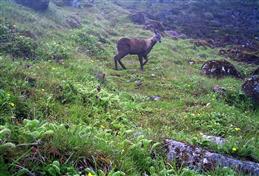Facilitation Of Inscription Process Of Khangchendzonga Biosphere Reserve On The World Heritage List

The objective of the subcomponent is to assist Sikkim state in enlisting Khangchendzonga and the Lepchas on UNESCO?s World Heritage List. Activities for this objective will include the followings.
-
preparation of a detailed document on the outstanding universal value of Khangchendzonga and the Lepchas for its inscription on the World Heritage List;
-
assistance to the state in submitting the document to the World Heritage Convention (WHC) of the United Nations Educational Scientific and Cultural Organisation (UNESCO); and
-
full support to the state in hosting the field mission by the World Heritage Committee.
India ratified the World Heritage Convention in 1977 and thus can submit nominations for properties on its territory to be included on the World Heritage List. It currently has five natural properties on the List: Kaziranga National Park, Keoladeo National Park, Manas Wildlife Sanctuary, Nanda Devi National Park, and Sundarbans National Park. Each nominated site is independently evaluated by two Advisory Bodies: the International Council on Monuments and Sites (ICOMOS) and the International Union of Conservation of Nature (IUCN). The former provides evaluations of cultural sites to the World Heritage Committee, while the latter does the same for natural sites. The evaluation process includes a field mission to the nominated site to meet authorities and stakeholders, and to assess the management and integrity of the site.
Every year between May and April, the IUCN carries out a rigorous, year-long evaluation process before providing its recommendations. The World Heritage Committee meets annually in June or July to decide which sites to inscribe on the World Heritage List. It can also defer its decision and refer a nomination back to the state party for further work, or reject the inscription. In order to enhance biological and cultural significance of Khangchendzonga Biosphere Reserve (KBR), and accelerate the process of inscription the following activities are considered for implementation under the Project.
-
Improvement on habitats through afforestation/assisted natural regeneration with indigenous plant
-
species
-
Awareness building among general public and local communities on the importance of conservation in KBR
-
Capacity development of Himal Rakshak (Mountain Guard) to carry forward the awareness programme among visitors
-
Proper garbage disposal facilities should be in place particularly along the trekking routes and nature trails
-
Eco-friendly accommodation should be encouraged in the forest fringe villages
-
Conservation efforts for protection of certain flagship species like Musk deer, Snow leopard and
-
Red panda which are unique to Himalayan ecosystem must be enhanced
-
Efforts should be made to keep the water bodies of the KBR pollution free
-
Visitor interpretation centre should well exhibited to depict the uniqueness of this KBR
Documentation of Case History
A team of in-state consultants in biodiversity and anthropology will be assigned to prepare a document on Khangchendzonga and the Lepchas of Sikkim. Extensive local consultations will be held during the preparation of the document. The document will be evaluated by a committee of state-level experts. It will then be submitted to the state and central governments, who will forward them to the World Heritage Committee.